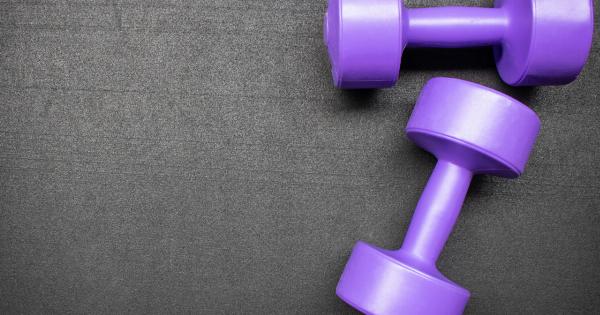Our lungs are remarkably complex organs that play a crucial role in supplying oxygen to our body and removing carbon dioxide. Over time, our lung capacity may decrease due to various factors such as aging, smoking, and pollution.
However, there are many exercises that can help improve our lung capacity, allowing us to breathe more easily and efficiently.
What is lung capacity?
Lung capacity refers to the maximum amount of air our lungs can hold. It is influenced by various factors such as age, gender, height, and overall health.
A healthy adult can typically hold around 6 liters of air in their lungs, but this can vary widely from person to person.
Why is lung capacity important?
Lung capacity is an important indicator of overall lung health. It can affect our breathing, endurance, and physical performance.
Low lung capacity can also be a sign of underlying health issues such as asthma, chronic obstructive pulmonary disease (COPD), or lung cancer.
What are some effective exercises to improve lung capacity?
There are various exercises that can help improve lung capacity by strengthening our breathing muscles and increasing oxygen uptake. Here are some of the most effective exercises:.
1. Diaphragmatic breathing
Diaphragmatic breathing, also known as belly breathing, involves breathing deeply into your diaphragm, the thin muscle underneath your lungs. This exercise helps strengthen the diaphragm and encourages full oxygen exchange. To do this exercise:.
– Lie on your back with your knees bent and place one hand on your belly and one on your chest.
– Breathe in deeply through your nose, allowing your belly to rise and your chest to stay still.
– Exhale slowly through your mouth, letting your belly fall inward.
– Try to inhale for 2-3 seconds and exhale for 4-6 seconds, gradually increasing the length of your exhale.
2. Pursed-lip breathing
Pursed-lip breathing is a simple exercise that can help slow down your breathing and improve oxygen uptake. It involves breathing in through your nose and exhaling through pursed lips, as if you were blowing out a candle. To do this exercise:.
– Sit comfortably with your back straight.
– Inhale slowly through your nose for 2 seconds.
– Purse your lips and exhale slowly and steadily for 4-6 seconds.
3. Lung exercises with an incentive spirometer
An incentive spirometer is a device that helps you practice deep breathing and expand your lungs to their full capacity. It consists of a handheld device with a mouthpiece and a dial that measures your airflow. To do this exercise:.
– Sit upright and hold the spirometer at mouth level.
– Inhale slowly and deeply through the mouthpiece, trying to get the dial as high as possible.
– Hold your breath for a few seconds.
– Exhale slowly and repeat the process.
4. Interval training
Interval training involves alternating between high-intensity exercises and periods of rest. It can help improve cardiovascular health and increase lung capacity by exposing your lungs to varying levels of exertion. To do this exercise:.
– Choose an aerobic exercise such as running, cycling, or swimming.
– Warm up for 5-10 minutes with light exercise.
– Alternate between high-intensity exercise for 20-30 seconds and rest for 10-15 seconds.
– Repeat the cycle for 10-15 minutes.
– Cool down for 5-10 minutes with light exercise.
5. Yoga breathing exercises
Yoga breathing exercises, also known as pranayama, can help improve lung capacity and reduce stress. There are various types of yoga breathing exercises, but some of the most effective include:.
– Kapalabhati (skull-shining breath): Inhale deeply, then exhale rapidly through your nose while contracting your abdominal muscles.
– Bhastrika (bellows breath): Inhale deeply, then exhale forcefully through your nose while pumping your arms up and down in front of your body.
– Anulom-vilom (alternate nostril breathing): Close one nostril with your thumb and inhale through the other nostril, then close the other nostril with your ring finger and exhale through the first nostril.
6. Running and cycling
Aerobic exercises such as running and cycling can help improve lung capacity and cardiovascular health. They increase your lung’s ability to take in oxygen and deliver it to your body. To do this exercise:.
– Choose your preferred aerobic activity such as running or cycling.
– Begin at a comfortable pace and gradually increase your speed and endurance.
– Aim to exercise for 20-30 minutes, 3-5 times per week.
7. Swimming
Swimming is another excellent aerobic exercise that can help improve lung capacity. It requires controlled breathing and exposes your lungs to varying levels of exertion. To do this exercise:.
– Swim laps at a comfortable pace, focusing on your breathing and stroke technique.
– Gradually increase your speed and endurance over time.
– Aim to swim for 20-30 minutes, 3-5 times per week.
8. High-altitude training
High-altitude training involves exercising at high altitudes, where oxygen levels are lower. This can help improve lung capacity and increase the production of red blood cells, which transport oxygen to the body.
However, this type of training should only be done under medical supervision due to the potential risks.
9. Breathing exercises with resistance bands
Resistance bands are a versatile tool that can be used to strengthen your breathing muscles and improve lung capacity. To do this exercise:.
– Hold a resistance band in both hands and anchor it around a stable object.
– Inhale while pulling the band towards your chest, feeling the resistance in your muscles.
– Exhale slowly while releasing the band back to its starting position.
– Repeat for 10-15 repetitions.
10. Dancing
Dancing is a fun and effective way to improve lung capacity while getting your heart rate up. It requires controlled breathing, coordination, and endurance. To do this exercise:.
– Choose your preferred dance style such as salsa, hip-hop, or ballet.
– Follow along with a dance video or take a dance class.
– Focus on your breathing and coordination, gradually increasing the intensity and duration of your dance sessions.
Conclusion
Improving lung capacity is crucial for maintaining overall lung health and physical performance.
By incorporating these exercises into your daily routine, you can strengthen your breathing muscles, increase oxygen uptake, and enjoy the benefits of better lung health and endurance. As always, be sure to consult your doctor before beginning any new exercise regimen, especially if you have underlying health issues.































